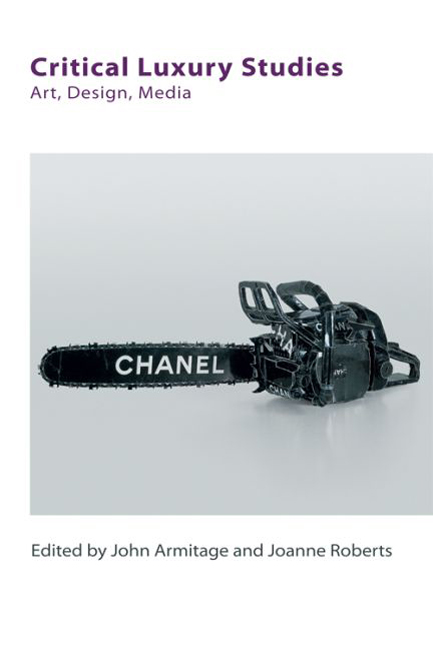Book contents
- Frontmatter
- Contents
- List of Figures
- List of Tables
- Series Editors’ Preface
- Acknowledgements
- Notes on Contributors
- 1 Critical Luxury Studies: Defining a Field
- I CRITICAL LUXURY STUDIES
- II ART, DESIGN, MEDIA
- 7 Experiments in Suchness: Hiroshi Sugimoto's Silk Shiki for Hermès
- 8 Libeskind in Las Vegas: Reflections on Architecture as a Luxury Commodity
- 9 Sartorial Connoisseurship, the T-Shirt and the Interrogation of Luxury
- 10 Online Luxury: Geographies of Production and Consumption and the Louis Vuitton Website
- Index
8 - Libeskind in Las Vegas: Reflections on Architecture as a Luxury Commodity
from II - ART, DESIGN, MEDIA
Published online by Cambridge University Press: 23 September 2017
- Frontmatter
- Contents
- List of Figures
- List of Tables
- Series Editors’ Preface
- Acknowledgements
- Notes on Contributors
- 1 Critical Luxury Studies: Defining a Field
- I CRITICAL LUXURY STUDIES
- II ART, DESIGN, MEDIA
- 7 Experiments in Suchness: Hiroshi Sugimoto's Silk Shiki for Hermès
- 8 Libeskind in Las Vegas: Reflections on Architecture as a Luxury Commodity
- 9 Sartorial Connoisseurship, the T-Shirt and the Interrogation of Luxury
- 10 Online Luxury: Geographies of Production and Consumption and the Louis Vuitton Website
- Index
Summary
Around the time that the Guggenheim Museum in Bilbao opened in 1997 – a memorably sinuous building designed by the office of architect Frank Gehry – journalists coined the term ‘starchitect’. It is now used to refer to the famous architects of ‘signature’ buildings, to Gehry and also Zaha Hadid, Jean Nouvel, Norman Foster, Renzo Piano and Rem Koolhaas. It is not new to promote the idea of the genius architect. Historians have, for centuries, likened architects to solitary artists despite the teams of people who are inevitably involved in designing and making buildings. What is new, however, is that big-name architects are no longer just designers of spaces and traders in cultural capital but also part of a group of global luxury brands whose aura can be attributed, at least in part, to the mutual interdependence and reinforcement of those brands (Klein 1999; Klingmann 2010). Prada have hired Herzog and DeMeuron and Rem Koolhaas's OMA to design stores for them, for example, to mutual commercial benefit.
The soubriquet ‘starchitect’ is, arguably, most often applied to Daniel Libeskind. Formerly seen as an intellectual, as a ‘paper architect’ who did not build, he shot to fame with the completion of the Jewish Museum in Berlin which opened in 2001. Its jagged forms and choreographed experiences derived from powerful ideas about commemoration, where absences evoke presences and presences evoke absences. Dramatic millennium projects around the world fostered the idea that ‘iconic’ buildings could be catalysts for urban regeneration, helping Libeskind's studio, and his personal imprimatur as designer, to become a global brand. Libeskind is now most famous for museums, including Imperial War Museum North in Salford, UK (2002) and dramatic alterations to the Military History Museum in Dresden, Germany (2011). The studio has also produced various commercial projects including apartments in Singapore (2011) and Westside Shopping and Leisure Centre in Bern, Switzerland (2008). This chapter is about another Libeskind project: another shopping mall, opened in Las Vegas in 2009, deploying what have become the architect's trademark crystalline shapes. Named ‘Crystals at CityCenter’, the mall's branding derives its name and its luxury credentials from Libeskind's signature contribution.
- Type
- Chapter
- Information
- Critical Luxury StudiesArt, Design, Media, pp. 151 - 176Publisher: Edinburgh University PressPrint publication year: 2016



